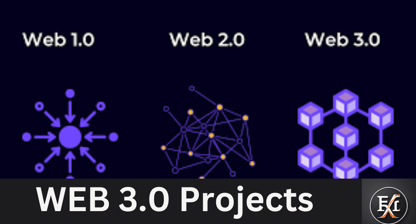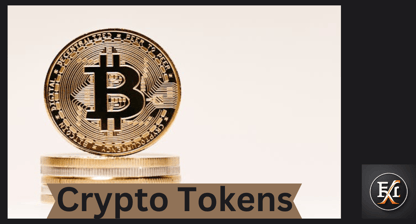WEB 3 Projects


Web3 projects refer to applications and platforms built on decentralized technologies such as blockchain. They aim to create a more open, transparent, and user-centric internet, often referred to as the "decentralized web" or "Web 3.0." These projects leverage smart contracts, decentralized protocols, and token economies to offer services that don't rely on central intermediaries. Here are some notable categories and examples of Web3 projects:
Categories and Examples of Web3 Projects:
Decentralized Finance (DeFi):
Uniswap: A decentralized exchange (DEX) allowing users to trade cryptocurrencies directly from their wallets.
Aave: A decentralized lending and borrowing platform where users can earn interest on deposits and borrow assets.
Compound: Another DeFi protocol for lending and borrowing cryptocurrencies.
Non-Fungible Tokens (NFTs) and Marketplaces:
OpenSea: A leading marketplace for buying, selling, and trading NFTs.
Rarible: A decentralized marketplace for NFTs that allows users to create, sell, and collect digital items.
CryptoKitties: A blockchain-based game where players can collect, breed, and trade virtual cats.
Decentralized Autonomous Organizations (DAOs):
MakerDAO: A decentralized organization that manages the stablecoin DAI and governs its monetary policy through community voting.
DAOstack: A platform for creating and managing DAOs, enabling decentralized decision-making processes.
Decentralized Storage and Computing:
Filecoin: A decentralized storage network that allows users to rent out spare storage space and retrieve data securely.
IPFS (InterPlanetary File System): A peer-to-peer network for storing and sharing data in a distributed file system.
Golem: A decentralized computing network that enables users to rent out their unused computing power.
Social and Content Platforms:
Steemit: A blockchain-based social media platform where users earn cryptocurrency for creating and curating content.
Minds: A decentralized social network focused on privacy and user control over data.
Identity and Authentication:
Civic: A decentralized identity verification platform that gives users control over their personal information.
uPort: A self-sovereign identity system allowing users to manage their digital identities securely.
Infrastructure and Development Tools:
Ethereum: The leading platform for decentralized applications (dApps) and smart contracts.
Polkadot: A multi-chain network that enables different blockchains to interoperate and share information.
Chainlink: A decentralized oracle network that provides real-world data to smart contracts on various blockchains.
Metaverse and Virtual Worlds:
Decentraland: A virtual world owned by its users, where they can create, explore, and trade virtual assets.
Sandbox: A decentralized gaming platform where players can build, own, and monetize their gaming experiences using NFTs.
Key Characteristics of Web3 Projects:
Decentralization: Elimination of central intermediaries, allowing peer-to-peer interactions.
Ownership and Control: Users have greater ownership and control over their data and digital assets.
Transparency: Operations and transactions are transparent and often publicly verifiable on the blockchain.
Interoperability: Web3 projects often focus on interoperability, enabling seamless integration and interaction between different platforms and protocols.
Tokenization: Many Web3 projects use tokens to incentivize participation, reward users, and govern the network.
These Web3 projects are part of a broader movement to build a more decentralized, user-centric internet that empowers individuals and reduces reliance on centralized entities.
Crypto Tokens


In the context of cryptocurrency, tokens are digital assets created and managed on a blockchain, representing a variety of assets or utilities. They can be used for different purposes, including governance, access to a service, value transfer, or as a stake in a decentralized network.
Types of Tokens in Cryptocurrency:
Utility Tokens:
Definition: These tokens provide access to a specific service or product within a blockchain ecosystem.
Examples:
Basic Attention Token (BAT): Used within the Brave browser ecosystem to reward users for viewing ads.
Chainlink (LINK): Used to pay for services within the Chainlink decentralized oracle network.
Security Tokens:
Definition: These tokens represent ownership in a real-world asset or a stake in an investment product, and they are subject to regulatory oversight.
Examples:
tZERO: A security token offering by the tZERO platform, representing equity ownership.
RealT: Tokens that represent fractional ownership in real estate properties.
Governance Tokens:
Definition: These tokens provide holders with voting power in a decentralized protocol, allowing them to influence project decisions and governance.
Examples:
Uniswap (UNI): Allows holders to vote on proposals affecting the Uniswap protocol.
Maker (MKR): Used to participate in the governance of the MakerDAO system.
Stablecoins:
Definition: These tokens are pegged to a stable asset, such as a fiat currency or commodity, to minimize price volatility.
Examples:
Tether (USDT): Pegged to the US dollar.
USD Coin (USDC): Another US dollar-pegged stablecoin.
Asset-Backed Tokens:
Definition: These tokens are backed by real-world assets, such as gold, real estate, or other commodities.
Examples:
PAX Gold (PAXG): Each token is backed by one troy ounce of gold.
Tether Gold (XAUT): Represents ownership of physical gold.
Non-Fungible Tokens (NFTs):
Definition: These are unique tokens that represent ownership or proof of authenticity of a specific item or piece of content.
Examples:
CryptoKitties: Collectible virtual cats with unique attributes.
NBA Top Shot: Digital collectibles of NBA highlights.
Platform Tokens:
Definition: These tokens are native to a specific blockchain platform and are used to pay for transactions, smart contract execution, and other services on the network.
Examples:
Ether (ETH): The native token of the Ethereum blockchain.
BNB (Binance Coin): Initially launched as a utility token for the Binance exchange, now used for transaction fees on the Binance Smart Chain.
Reward Tokens:
Definition: These tokens are given as rewards for participating in a network, such as staking, mining, or providing liquidity.
Examples:
Compound (COMP): Distributed to users of the Compound protocol for borrowing and lending activities.
Synthetix (SNX): Used to reward participants who stake their SNX tokens and provide liquidity to the Synthetix protocol.
Key Characteristics of Tokens:
Blockchain-Based: Tokens are created and managed on blockchain platforms like Ethereum, Binance Smart Chain, and others.
Smart Contracts: Tokens are typically issued and governed by smart contracts, which automate their distribution, transfer, and other functionalities.
Interchangeability: Tokens can be fungible (interchangeable, like currency) or non-fungible (unique, like collectibles).
Tokens play a crucial role in the cryptocurrency ecosystem, enabling various use cases and innovations in decentralized finance (DeFi), digital art, governance, and more.
